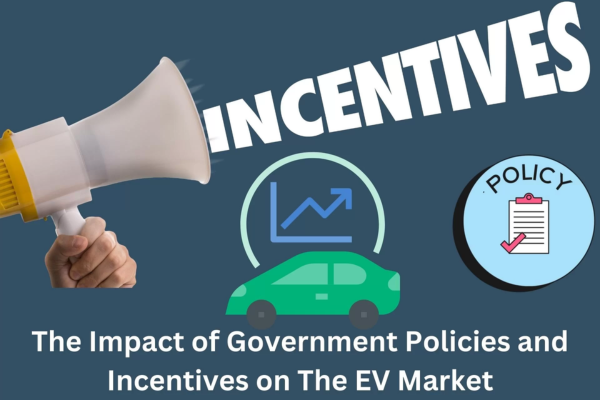Table of Contents
- Introduction
- Major steps taken by governments to improve Ev Charging Infrastructure.
- Conclusion
- Frequently Asked Questions.
Introduction:

In an era marked by growing environmental consciousness and the urgent need to combat climate change, the global transportation sector stands at a crossroads. As traditional vehicles powered by fossil fuels contribute significantly to carbon emissions, the shift towards sustainable alternatives has become imperative. Among these alternatives, electric vehicles (EVs) have emerged as a promising solution, offering reduced emissions, lower operating costs, and increased energy efficiency.
However, the widespread adoption of EVs hinges not only on advancements in vehicle technology but also on the development of a robust charging infrastructure. Just as petrol stations are essential for traditional vehicles, charging stations play a crucial role in enabling the mass adoption of EVs. Recognizing this, governments around the world have embarked on ambitious initiatives to bolster the EV charging network, laying the groundwork for a cleaner, greener future of transportation.
In this article, we delve into the major steps taken by governments to improve EV charging stations. From financial incentives and public-private partnerships to regulatory support and national electrification plans, governments are implementing a multifaceted approach to enhance charging infrastructure. By fostering innovation, collaboration, and investment, these initiatives aim to accelerate the transition towards sustainable mobility and reduce reliance on fossil fuels.
In recent years, the global push towards sustainable transportation has accelerated, with electric vehicles (EVs) emerging as a pivotal solution to reduce carbon emissions and combat climate change. As EV adoption continues to rise, governments worldwide are undertaking significant steps to bolster the infrastructure supporting these vehicles. Central to this effort is the expansion and enhancement of EV charging stations.
Let’s delve into the major initiatives’ governments are implementing to foster the growth of EV charging infrastructure:
Major Initiatives taken by Governments for the growth of EV charging Infrastructure.

1. Financial Incentives:
- Governments are offering financial incentives to businesses and individuals to invest in EV charging stations. These incentives may include tax credits, grants, and subsidies aimed at offsetting installation costs.
- Tax incentives for EV charging infrastructure development encourage private sector participation and stimulate investment in this crucial sector.
2. Public-Private Partnerships (PPPs):
- Governments are forming partnerships with private companies to accelerate the deployment of EV charging stations. PPPs leverage the expertise and resources of both sectors to establish a comprehensive charging network.
- By collaborating with private entities, governments can tap into innovative technologies and business models to make charging stations more efficient and accessible.
3. Regulatory Support:
- Governments are enacting regulations to mandate the installation of EV charging infrastructure in new developments, public buildings, and commercial premises. These regulations ensure that charging stations become an integral part of urban planning and development.
- Streamlining permitting processes and reducing bureaucratic hurdles facilitate the rapid deployment of charging stations, encouraging greater adoption of EVs.
4. Funding Allocation:
- Governments are allocating significant funds towards the development of EV charging infrastructure as part of broader transportation initiatives. These funds are earmarked for research and development, infrastructure expansion, and technology innovation.
- Dedicated funding streams ensure a steady flow of resources into the EV charging sector, fostering innovation and scalability.
5. National Electrification Plans:
- Many countries are formulating comprehensive electrification plans aimed at transitioning their transportation sector to electric power. These plans outline specific targets for EV adoption and the expansion of charging infrastructure.
- National electrification plans provide a roadmap for coordinated action, guiding investments and policy decisions to support the widespread adoption of EVs.
6. Standardization and Interoperability:
- Governments are promoting standardization and interoperability of EV charging infrastructure to ensure compatibility across different networks and EV models. Standardized protocols facilitate seamless charging experiences for EV owners, regardless of location or provider.
- Establishing common technical standards and protocols promotes market competition and drives down costs, making EV charging more affordable and accessible to all.
7. Public Awareness Campaigns:
- Governments are launching public awareness campaigns to educate citizens about the benefits of EVs and the importance of charging infrastructure. These campaigns dispel myths, address concerns, and promote EV adoption as a viable alternative to traditional vehicles.
- By raising awareness and fostering a positive perception of EVs, governments encourage consumer confidence and drive demand for charging infrastructure.
8. Research and Development (R&D) Initiatives:
- Governments are investing in R&D initiatives to advance EV charging technology and infrastructure. These initiatives focus on improving charging speed, efficiency, and reliability, as well as developing next-generation charging solutions.
- Collaboration with research institutions and industry stakeholders drives innovation and accelerates the deployment of cutting-edge charging infrastructure.
9. Infrastructure Investment Programs:
- Governments are launching dedicated infrastructure investment programs aimed at upgrading and expanding the electric vehicle charging network. These programs allocate funds specifically for the installation of charging stations in key locations such as highways, urban centres, and rural areas.
- By targeting strategic locations, governments ensure that EV drivers have convenient access to charging facilities, enhancing the feasibility and attractiveness of electric vehicles for long-distance travel.
10. Incentives for Charger Diversity:
- Governments are incentivizing the deployment of diverse charging solutions to cater to the varying needs of EV owners. In addition to traditional Level 2 chargers, incentives may be offered for the installation of fast chargers, ultra-fast chargers, and wireless charging systems.
- Encouraging the deployment of a diverse range of charging technologies ensures that EV drivers have options tailored to their preferences, driving habits, and vehicle specifications.
11. Integration with Renewable Energy Sources:
- Governments are promoting the integration of EV charging infrastructure with renewable energy sources such as solar and wind power. By coupling charging stations with clean energy generation, governments aim to reduce the environmental footprint of electric vehicles and promote sustainable energy usage.
- Integration with renewable energy sources also enhances the resilience and reliability of charging infrastructure, mitigating the impact of power outages and grid disruptions.
12. Inclusive Access Programs:
- Governments are implementing inclusive access programs to ensure equitable access to EV charging infrastructure for all communities, including underserved and disadvantaged populations. These programs may involve subsidies for charging station installation in low-income neighbourhoods or rural areas.
- By prioritizing inclusivity, governments aim to address disparities in access to transportation services and promote social equity in the transition to electric mobility.
13. International Cooperation and Knowledge Sharing:
- Governments are engaging in international cooperation and knowledge sharing initiatives to exchange best practices, lessons learned, and technological innovations in the field of EV charging infrastructure. Collaborative efforts facilitate the transfer of expertise and accelerate progress towards common goals.
- Participation in international forums, partnerships, and agreements strengthens global networks and fosters a collective approach to addressing the challenges of sustainable transportation.
14. Incentives for Grid Modernization:
- Governments are offering incentives for grid modernization efforts to accommodate the increased demand for electricity resulting from the widespread adoption of electric vehicles. Investments in grid infrastructure, smart grid technologies, and energy storage systems enhance the stability and reliability of the power grid.
- Grid modernization initiatives support the seamless integration of EV charging infrastructure with existing electricity networks, minimizing the risk of overload and optimizing energy usage.
15. Consumer Education and Training Programs:
- Governments are launching consumer education and training programs to familiarize EV owners with charging protocols, etiquette, and best practices. These programs provide guidance on how to locate, use, and maintain charging stations effectively.
- By empowering consumers with knowledge and skills, governments promote confidence and convenience in EV ownership, driving further uptake of electric vehicles and utilization of charging infrastructure.
Conclusion:

In conclusion, governments worldwide are taking significant steps to enhance EV charging infrastructure, recognizing its pivotal role in facilitating the widespread adoption of electric vehicles. Through financial incentives, partnerships, regulations, funding allocation, electrification plans, standardization efforts, public awareness campaigns, and R&D initiatives, governments are laying the groundwork for a sustainable transportation future. By fostering innovation, collaboration, and investment in EV charging infrastructure, governments are driving the transition towards a cleaner, greener, and more resilient transportation system.
Frequently Asked Questions:
Governments around the world are implementing various strategies to enhance EV charging infrastructure. This includes investment in public charging stations, offering incentives to businesses and individuals for installing chargers, and collaborating with private companies to expand the network.
Transitioning to electric vehicles is crucial for reducing greenhouse gas emissions and combating climate change. Enhancing charging infrastructure is essential to alleviate range anxiety and encourage more people to switch to EVs, thus reducing reliance on fossil fuels.
Some challenges include the high upfront cost of installing charging infrastructure, regulatory hurdles, and the need for coordination among various stakeholders. Additionally, ensuring equitable access to charging infrastructure in both urban and rural areas is a significant challenge.
Government initiatives such as subsidies for EV purchases, tax incentives, and grants for charging infrastructure installation play a crucial role in encouraging consumers to switch to electric vehicles. These incentives make EVs more affordable and accessible, driving adoption rates.
Investing in EV charging infrastructure not only reduces greenhouse gas emissions and improves air quality but also creates economic opportunities, such as job creation in the renewable energy sector. Additionally, it helps reduce dependence on imported oil and enhances energy security. Overall, it contributes to a more sustainable and resilient transportation system.

